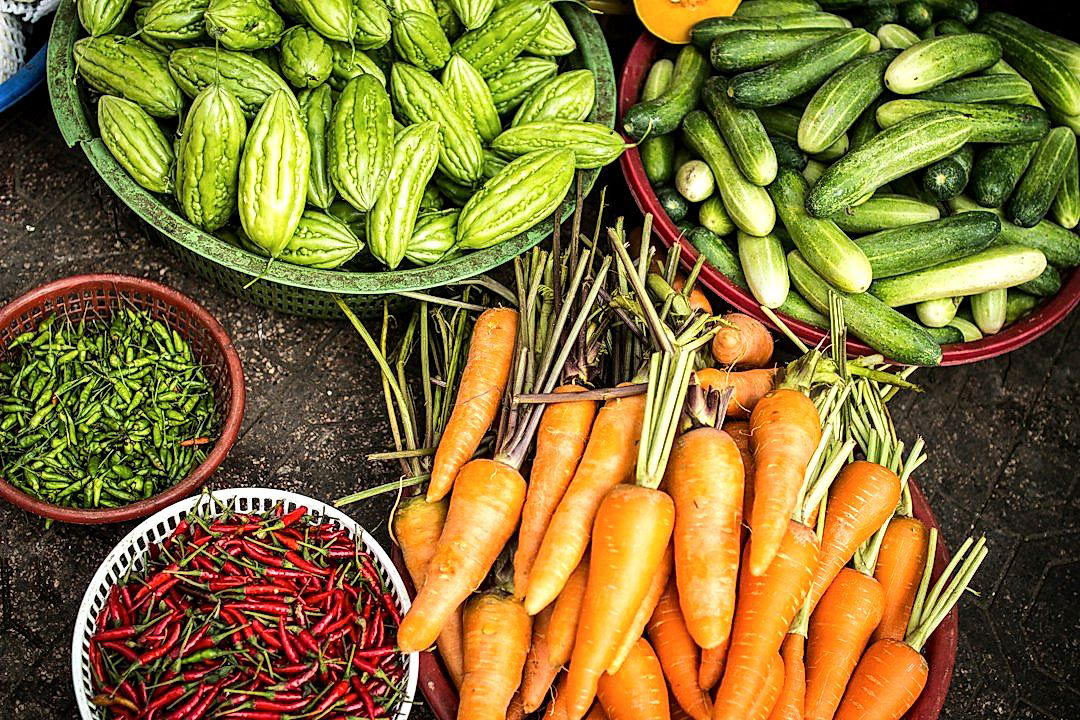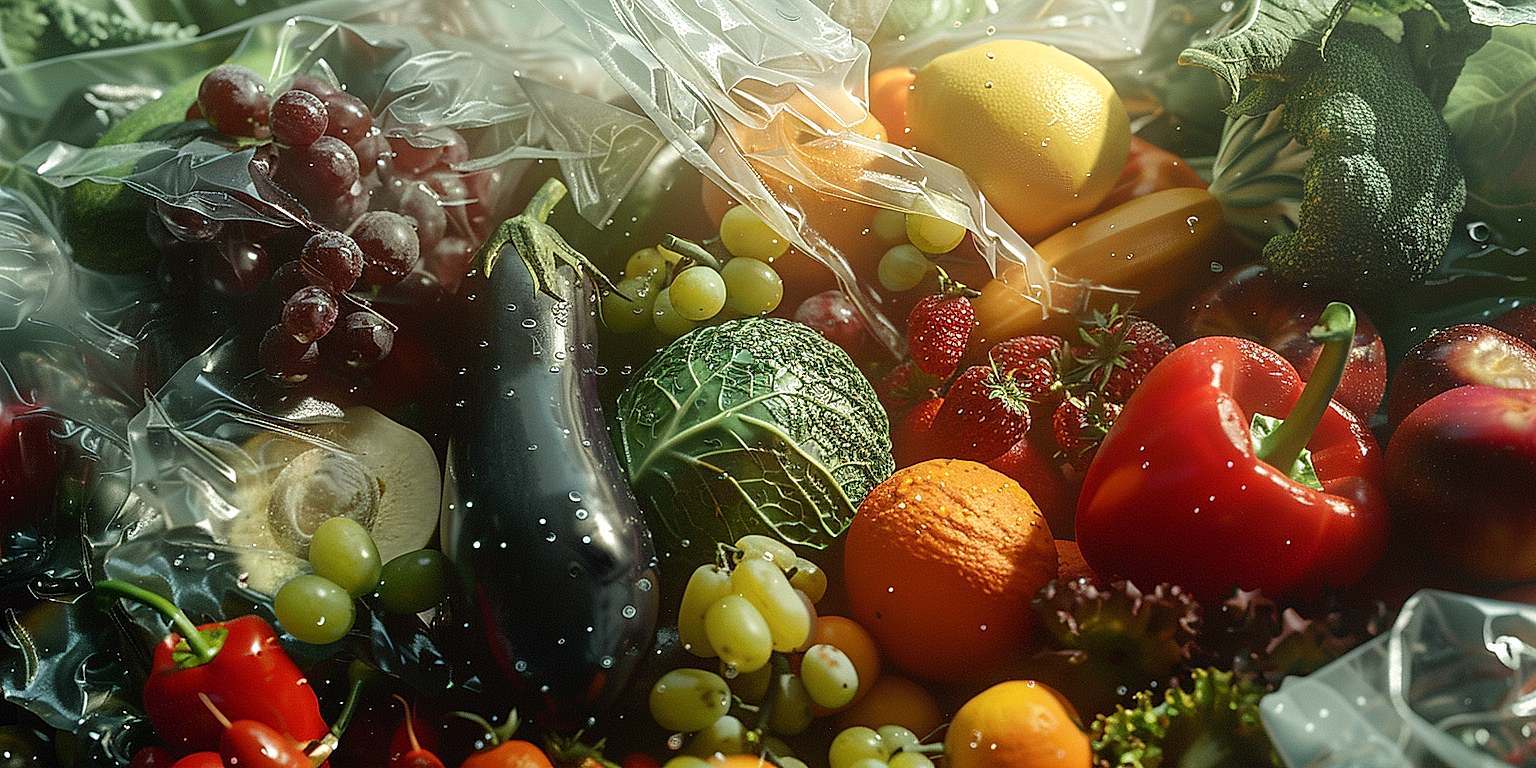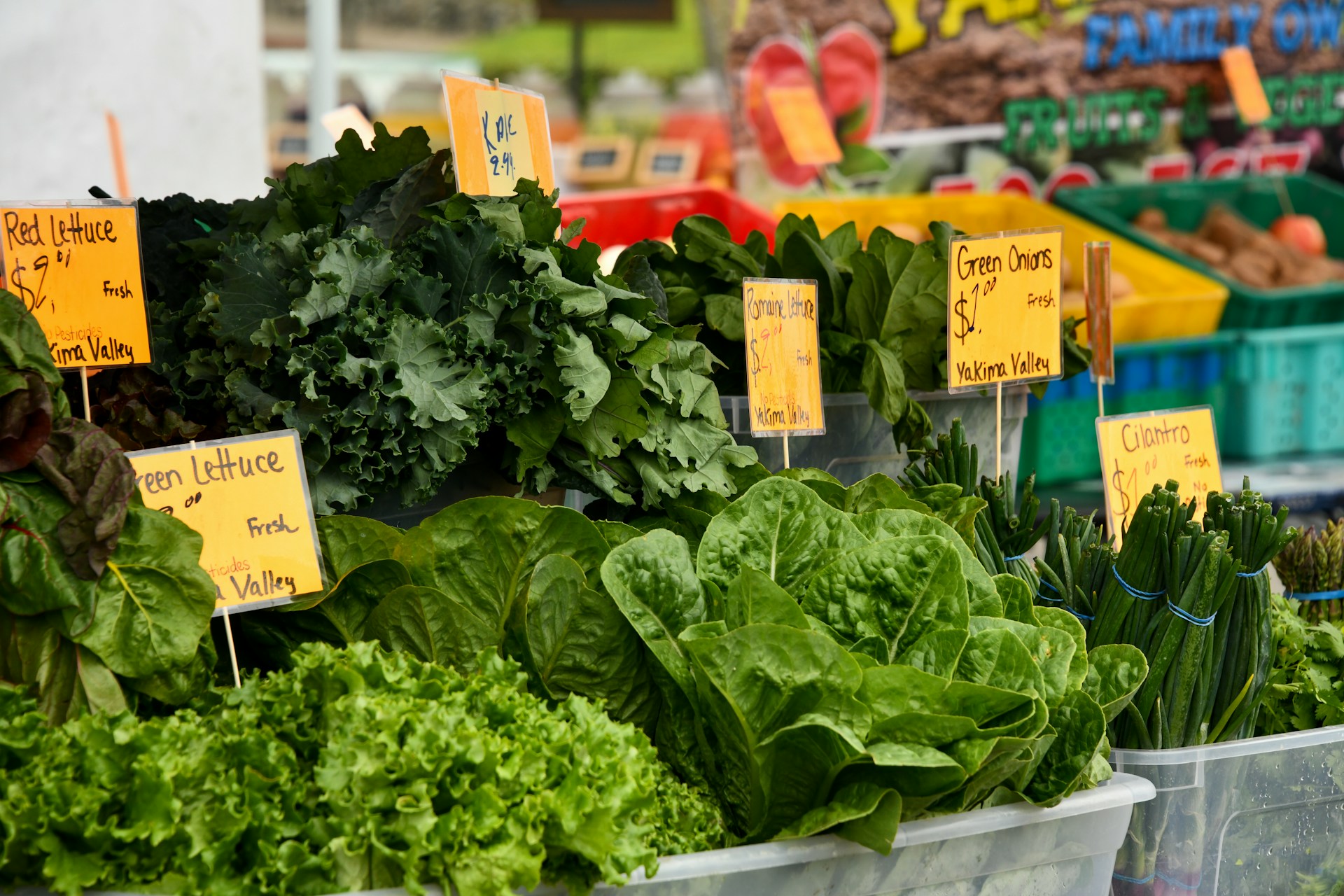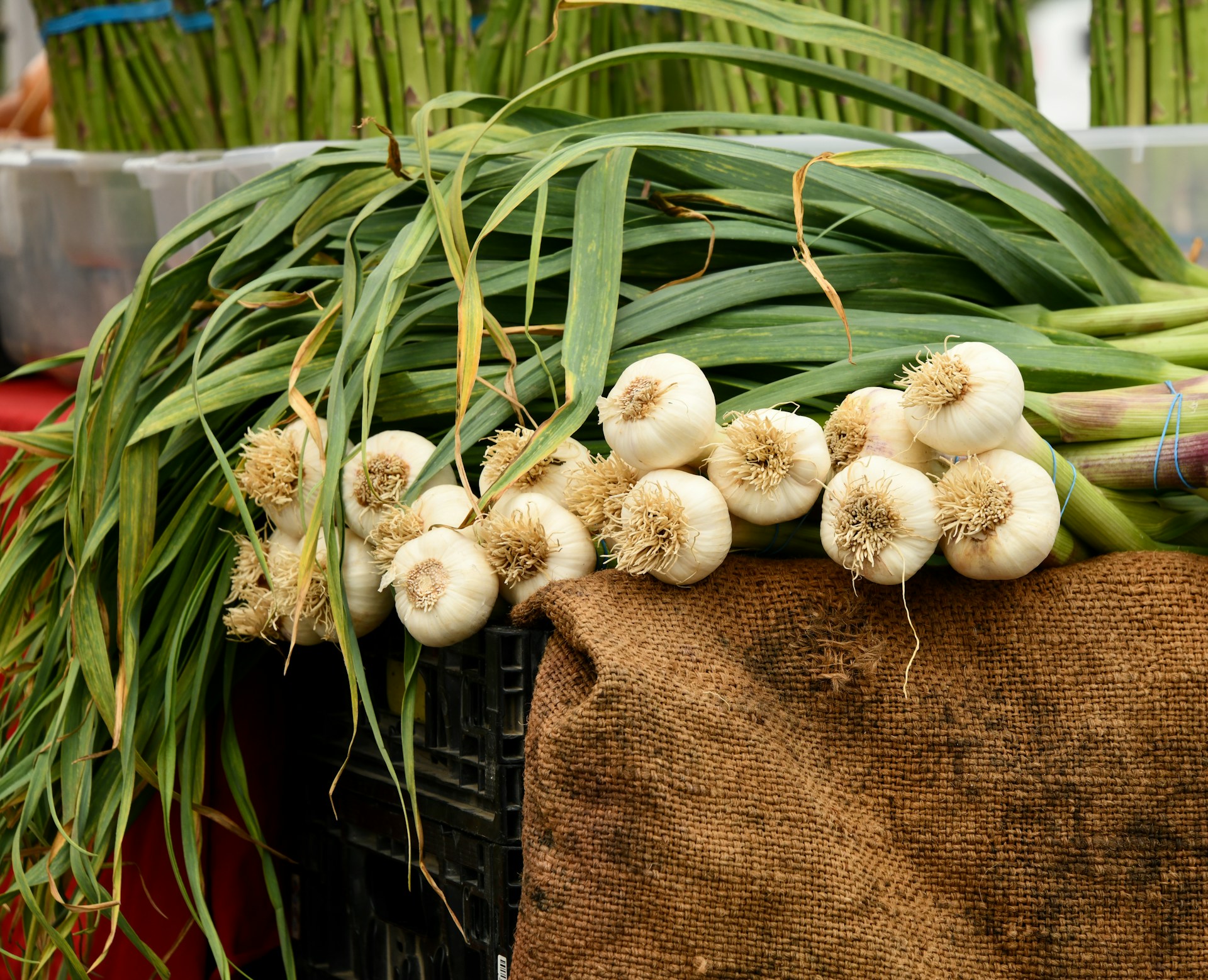In the modern world, a burgeoning emphasis is being placed on sustainability.
This is not limited to personal practices and habits, but also extends to the commercial sector, particularly in food supply chains.
In this context, innovative measures have started to gain prominence, reshaping the traditional methods of produce distribution.
Among a myriad of sectors, the focus here is on the fruit and vegetable industry.
The fresh produce supply chain, from farm to fork, is undergoing a noticeable transformation, principally driven by sustainability initiatives.
The implications of these changes and their impact on our food systems will form the crux of our discussion ahead.
Sustainability Initiatives Transforming Produce Distribution
1. Introducing Electric Vehicles for Produce Transportation
Implementing the use of electric vehicles in the field of produce transportation is paramount to increasing sustainability in the industry.
Particularly, these vehicles are gaining increased attention due to their enormous potential to reduce greenhouse gas emissions, indicating their salient role in mitigating climate change impacts.
Electric vehicles function by operating on an electric motor, as opposed to the commonly used internal combustion engines, thereby eliminating the release of harmful exhaust emissions.
Not only do they significantly contribute to cleaner air, but they are also more energy-efficient than their traditional counterparts, leading to reduced energy consumption.
Significantly reducing the food industry’s carbon footprint by replacing conventional delivery trucks with electric ones can bring immense environmental benefits.Despite the higher upfront costs of electric vehicles, they entail lower overall costs in the long run, variety from decreased energy costs to lesser maintenance expenses.
The reduced reliance on fossil fuels for transportation also contributes to economic sustainability by reducing dependence on these increasingly scarce resources.
With regard to the produce industry, specifically, using electric vehicles can help maintain better quality control of fresh produce during transportation.
The low noise and vibration levels of electric vehicles prevent unnecessary agitation of the fruit or vegetables, thus helping keep their integrity and freshness intact.
Moreover, some electric vehicles can be equipped with advanced temperature control systems, ensuring that the produce is kept at optimal conditions during transit.
This aspect is especially significant for perishable items that require refrigerated transport, where maintaining the desired temperature is crucial to avoid spoilage and ensure food safety.
The integration of electric vehicles into the produce distribution network would also promote technological innovation within the industry.
Overall, the transition to electric vehicles can accelerate the transformation of the food distribution system into a much cleaner, more efficient, and sustainable model.
However, it is important for businesses to keep in mind that this transition should be underpinned by a continued move towards cleaner electricity generation to maximize the environmental benefits of electric vehicles.
It is also crucial for policymakers and stakeholders to establish supportive policies and infrastructure that can facilitate this transition.
By embracing this paradigm shift, businesses can ensure a healthier environment, while also capitalizing on new opportunities for brand differentiation, customer engagement, and growing market demand for sustainably produced food.
2. Implementing Solar-Powered Cold Storage Systems
The push for sustainability in the produce distribution industry has seen a significant shift in storage solutions with the implementation of solar-powered cold storage systems.
These systems function by harnessing the power of the sun, converting it into energy that is then used to keep stored produce fresh and undamaged.
Not only does this form of energy provision significantly cut down on emission levels, but it also creates avenues for cost savings.
Furthermore, solar power provides an unending renewable source of energy, making it a perfect solution to the increasing demands of mass produce storage and distribution.
In the past, the main challenge to implementing solar-powered systems was the lack of enough solar energy to operate large-scale cold storage.
However, continual technological advancements have resulted in highly efficient solar panels and battery storage systems.
Today’s solar-powered cold storage units are capable of storing and preserving large quantities of produce for extended periods.
Moreover, these systems come with the added benefit of off-grid operation, removing the need for a constant electricity supply.
Thus, they are particularly beneficial for farmers and distributors in remote areas where access to traditional electricity may be problematic.
Another advantage of solar-powered cold storage systems is the reduction in food wastage.
Produce can be stored in optimal conditions for prolonged periods, therefore reducing the risk of spoilage and loss.
Implementing solar-powered cold storage systems is a transformative step towards improving sustainability and efficiency in the produce distribution industry.Although the initial investment may be relatively high,
the return on investment in terms of energy savings and decreased food waste makes these systems a worthwhile investment.
Furthermore, this also provides an ample opportunity for job creation in the renewable energy industry, leading to socio-economic benefits.
In essence, implementing solar-powered cold storage systems goes beyond the immediate environmental benefits.
It also contributes to broader sustainability goals such as better resource management, increased energy efficiency, and overall improved profitability for producers and distributors alike.
3. Encouraging Local Sourcing to Reduce Food Miles
One of the key components of sustainability initiatives in produce distribution is encouraging local sourcing to reduce food miles.
Local sourcing refers to the procurement of goods or services from local suppliers or manufacturers rather than those located in different geographical regions or countries.
This concept is especially relevant in food and agriculture industries, where produce is often transported over great distances from its place of origin to the consumer’s plate.
Reducing food miles, i.e., the distance food travels from where it is grown or raised to where it is ultimately purchased or consumed, directly diminishes the environmental impact of food transportation.
By supporting local farms and producers, we can significantly decrease the carbon footprint associated with food production.
Additionally, by buying local, we are potentially helping to promote regional economic stability by supporting local industries and jobs.
This notion is commonly referred to as ‘food sovereignty’, a concept which promotes community control over how and where food is produced, traded and consumed.
Local sourcing can also lead to increased food integrity and quality, as the time between harvest and consumption is significantly reduced.
One of the challenges in implementing local sourcing is the perceived increased cost of purchasing goods locally versus those mass-produced or imported.
However, these costs can be offset by investments in regional marketing campaigns, improved supply chain efficiencies, and mutual support structures between local businesses.
Encouraging customers to buy locally sourced produce can be achieved through marketing strategies that highlight the environmental, economic, and social benefits of such choices.
Furthermore, government entities can promote local sourcing through policy decisions, tax incentives or subsidies that support local farmers and producers.
With the concerning rates of climate change and increasing calls for more sustainable food systems, there is a pressing need for distributors and consumers alike to factor food miles into their buying decisions.
As part of an integrated approach to sustainability, the reduction of food miles through local sourcing can make a significant contribution to the global effort against climate change.
In conclusion, ‘going local’ serves to reduce food miles, but also represents a worthwhile investment in our community, our health, and our planet.
All in all, encouraging local sourcing is a pivotal part of any sustainability initiative aiming to transform produce distribution.
4. Opting for Biodegradable Packaging Materials
As part of sustainability initiatives transforming produce distribution, a vital strategy lies in opting for biodegradable packaging materials.
Given the increasing awareness and concern over the environment, several companies are now shifting towards more environmentally friendly packaging solutions.
These include tubes, trays, and containers, among others, made from materials that are readily biodegradable and compostable.
An appealing aspect of these packaging materials is that they break down naturally in the environment, thereby reducing the potential harm to the environment.
Opting for such materials is not only eco-friendly, but it also presents companies with a powerful tool to attract a consumer base that values sustainability and is willing to pay a premium for it.Importantly, the use of biodegradable packaging materials in produce distribution doesn’t compromise the quality of the produce nor its shelf-life.
On the contrary, it can enhance the image of the company as a business that cares for environmental sustainability.
In the quest for more sustainable packaging, companies can explore a wide array of materials starting from plant-based plastics to mushroom materials, from cellulose-based films to seaweed packaging.
The choice of the material would naturally depend on the specific requirements, in terms of longevity, moisture resistance, and cost, among other factors.
However, efforts should also be concentrated on the education and awareness of the general consumer, so they understand the importance of such packaging solutions.
They should be informed, for example, how biodegradable packaging can be composted at home or in industrial composting facilities and turned into nutrient-rich soil.
Further, consumers should be encouraged to correctly dispose of biodegradable packaging to prevent it from damaging the ecosystem.
A successful transition to biodegradable packaging materials within the produce distribution sector would involve the complete ecosystem – from the manufacturers to the consumers.
This approach does not only benefit the environment but can also positively impact the business’ reputation, promoting a sustainable image in the consumer’s mind.
Hence, opting for biodegradable packaging materials is a step forward in sustainability, promising significant benefits for the environment, consumers, and companies alike.
5. Promoting Waste Reduction via Composting or Recycling
One of the vital principles of sustainable practices in produce distribution centers around the promotion of waste reduction, particularly through composting and recycling initiatives.
This approach not only reduces the negative environmental impact of waste disposal, but also gives new life to the waste products by turning them into usable materials.
In the context of produce distribution, a significant amount of waste is generated from damaged goods, expired goods, packaging materials, and logistic processes.
Composting and recycling can significantly reduce this waste burden by providing a second life for these materials.
In the composting process, organic waste, such as damaged or expired fruits and vegetables, can be decomposed into nutrient-rich soil amendments, which can be used to boost soil productivity in farms.
By utilizing a composting system, a produce distribution facility can transform organic waste products into a valuable resource instead of simply discarding them into a landfill.
Packaging materials, on the other hand, often constitute a significant portion of the waste generated in distribution centers.
Subsequently, recycling programs can be employed to reclaim these materials, turning them into new packaging solutions or other products, thereby reducing the need for new materials.
Recycling and composting not only contribute to waste reduction, but also help close the resource loop, promoting a circular economy.
Moreover, these practices typically incur less environmental damage than traditional waste disposal methods, such as incineration or landfilling.
By adopting composting and recycling within their operations, produce distribution facilities can significantly decrease their environmental footprint.
Furthermore, implementing these sustainability initiatives can also mean working towards compliance with environmental regulations and contributing to national and international sustainability goals.
Not only does this show commitment to environmental responsibility, it also sends a positive message to stakeholders – including consumers, employees, and investors.
In the competitive produce distribution market, commitment to sustainability can be a distinguishing factor that attracts and retains customers.
Therefore, promoting waste reduction through composting and recycling is a win-win strategy that benefits both the environment and the business.
In essence, the promotion of waste reduction via composting and recycling practices is a transformative initiative poised to reshape the landscape of sustainable produce distribution in an era prioritizing the agenda of environmental conservation and sustainability.
The Bottom Line
Through the implementation of electric vehicles, solar-powered cold storage systems, local sourcing, biodegradable packaging, and a focus on waste reduction via composting or recycling, the environmental footprint of the food industry can greatly be reduced.
By embracing these sustainable practices not only do we confront the urgent challenge of climate change, but also usher in an era of sustainable growth and resilience.
Thus, the key to a more sustainable future lies not only in technological innovation but also in its smart and considerate application.
In turn, these technologies can help create a healthier, more sustainable, and inherently more profitable food industry for all.
It’s a necessary and achievable objective – so let’s do it.




